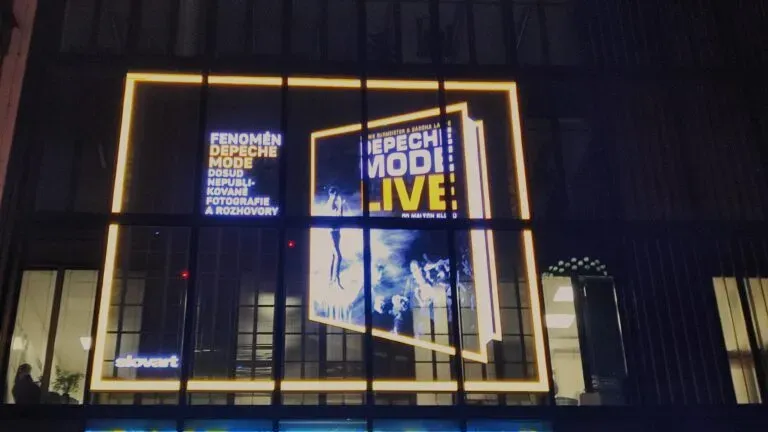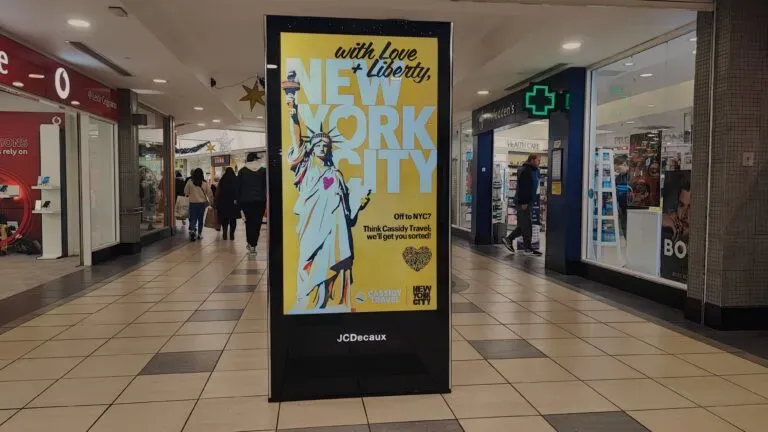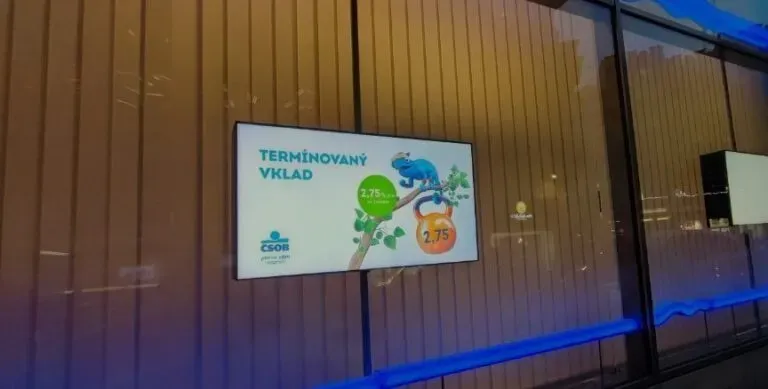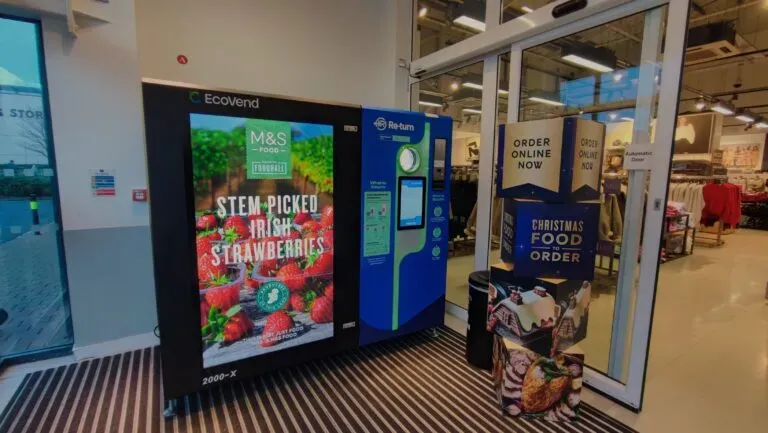DOOH – 84% of consumers remember ads they saw on LED screens
DOOH: Ad recall by consumers is a crucial metric for advertisers.
Advertising on digital screens (DOOH) is a modern method of promotion that uses digital displays to showcase advertising materials. These screens can be placed in various locations, such as shopping malls, public transport, streets, airports, and more, to capture the attention of potential customers.
The main advantages of advertising on digital screens include:
1. Content flexibility. Using video wall software, advertising content can be easily updated and tailored to different audiences or times of day.
2. High attractiveness. Bright and dynamic images attract people’s attention much faster than traditional static posters.
3. Target audience. Digital signage players enable the broadcasting of ads in specific locations, helping to more precisely reach the desired audience.
4. Interactivity. Some digital screens support interactive features, such as touchscreens, which increase audience engagement.
5. Analytics and performance tracking. Modern technologies, including pDOOH, allow for analyzing how often and how long people view ads, helping to assess their effectiveness.
Thus, digital screens are a powerful tool for advertisers, offering opportunities for more dynamic, targeted, and measurable advertising compared to traditional methods.
Thanks to the variety of formats (building images, wall stickers, LED screens, posters, and signs), outdoor advertising successfully withstands the test of time and continues to attract the attention of the target audience. Over the past decade, outdoor advertising has gained an additional advantage—the digital dimension. Digital outdoor advertising has become one of the fastest-growing and most impactful formats.
What is outdoor advertising?
Digital Out of Home is an abbreviation that refers to advertising activities targeting potential customers outside their gadgets and homes.
This advertising format leverages the advantages of broadcasting content through digital screens in elevators, airports, train stations, as outdoor ads, billboards, and television broadcasts.
The key difference is that traditional outdoor advertising shows only one image for a specific period, whereas DOOH can display multiple animated clips or videos on digital screens. Additionally, outdoor advertising interacts with the audience directly at the location, increasing the interactivity of the advertising campaign.
Examples of DOOH advertising applications
1. Large format: From billboards to public transport stops.
2. Local marketing: Advertising near office buildings, shopping malls, gyms, restaurants, bars, universities, and more.
3. Points of sale: Digital signage located inside stores selling branded products, such as department stores, fast-food restaurants, food courts, grocery and wine shops, and pharmacies.
While traditional media remains quite popular, its transition to the digital sphere is happening at a rapid pace.
According to Spiceworks, the market is expected to grow to $8.4 billion by 2025. This underscores advertisers’ trust in digital media. The industry also offers integrations, applications, and SaaS solutions that transform advertising into an intelligent, easy-to-manage, and promising marketing channel.
Why is DOOH a powerful advertising tool?
The advertising market is highly competitive. Marketers from all companies aim to ensure their messages reach the right people who will benefit from viewing the content.
Digital screens display vibrant, relevant, and engaging creative content in various locations, covering the path of potential consumers outside their homes—something other channels cannot offer.
Thanks to DOOH software and modern solutions, advertisers can optimize video ads to enhance audience engagement. The use of digital signage players enables the delivery of high-quality content at the right place and time, ensuring campaign effectiveness.
Statistics show that 98% of consumers have seen at least one digital outdoor ad in the past 30 days, and 84% remember it well. If your goal is to create positive emotions through brand interaction, outdoor advertising could be the ideal solution.
Advantages of outdoor advertising on Digital screens
Wide audience reach
Advertising helps attract and retain customer attention in public places outside their homes. Since consumers spend approximately 70% of their time outside their homes, outdoor media should be a key part of every company’s advertising strategy. Screens placed in strategic locations significantly expand audience coverage.
Targeting with maximum reach
Each DOOH format can adjust advertising throughout the day or week, allowing LED screens to display content that better reaches the intended audience.
Measurable results to improve strategy
Combined with analytics, digital signage provides real-time attribution data. This helps media networks and their clients enhance the efficiency of their advertising campaigns. The use of LED screen software allows for tracking the performance of each ad.
The ability to create creative content
Content is a key factor as it plays a crucial role in attracting potential customers or the target audience. DOOH advertising provides brands with the opportunity to present innovative and creative advertisements through LED screens that can display vibrant and dynamic messages.
Creating personalized, dynamic ads
With the emergence of artificial intelligence and behavior recognition algorithms, DOOH advertising holds great potential. It allows for analyzing consumer reactions and offering personalized ad formats. This approach helps build trust, influence customer perceptions, and enhance brand image.
Avoiding ad blocking on gadgets
The average user is bombarded daily with dozens or even hundreds of ad messages from various brands, making ad-blocking plugins extremely popular. However, advertising screens that cannot be “turned off” help businesses remain visible and engage with potential customers.
Challenges of Digital outdoor Advertising
1. DOOH is not as cost-effective as online advertising.
2. Difficulty in measuring effectiveness. Each ad display can be seen by many people simultaneously, complicating cost assessment compared to digital impressions.
3. Approximate estimates. Advertisers rely on mobile device location data to estimate traffic near outdoor ads, but this provides only rough approximations.
In the future, DOOH advertising is expected to incorporate facial recognition technologies to achieve more accurate and meaningful results.
DOOH targeting: What to know
Targeting is a key advantage in the digital world. Based on audience data, marketers create effective advertising strategies and decide on the suitability of various advertising channels. In traditional outdoor advertising, placement decisions are made solely based on geographic location, such as within certain postal codes or near specific stores.
However, with the advancement of advertising technologies, brands can use consumer traffic models to make informed decisions about outdoor ad placement. Understanding audience behavior and market trends allows for activating DOOH networks to reach the target audience in the right place at the right time.
In addition to audience targeting, a popular tactic is programmatic ad placement based on geography, proximity factors, and mobile traffic.
Pricing models for Digital outdoor advertising
DOOH Display Solutions are used in locations with high foot traffic: shopping malls, public transportation, train stations, or open spaces in public areas.
For outdoor media, a CPT (Cost Per Thousand) model is used with the help of sensors to calculate the number of contacts with the advertisement (audience size). Advertisers need an accurate count of these contacts, as one DOOH ad can be viewed by multiple people simultaneously.
Owners of advertising spaces evaluate video ads as a percentage of the advertising inventory depending on location, screen size, number of days, frequency, and duration of the ad. Media spots can be purchased individually or in packages.
Ads are usually broadcast in cycles that repeat several times per hour. The broadcasting time may be limited due to the operating hours of the location or lower foot traffic, which affects audience reach.
How to create DOOH ads that benefit your business
1. Analyze and understand your audience
By using a centralized video management system, you can accurately identify your audience, where they spend their time, and how best to engage with them.
2. Choose the right placement
In the case of DOOH, location is a crucial factor. Select DOOH sites that cover the maximum number of representatives of your target group.
3. Be creative and leverage timely events (situational advertising)
Think outside the box and use both physical and digital space. DOOH Display Solutions enable the creation of vibrant and innovative campaigns that grab attention.
4. Collaborate with experts
Many marketing service companies have experience in creating content and developing strategies for DOOH advertising. Leveraging their expertise can significantly boost the effectiveness of your campaigns.
Remember: While most brands focus exclusively on the online space, digital outdoor advertising offers immense opportunities. If your online campaigns aren’t delivering the desired results, it might be time to expand your horizons. DOOH advertising is a modern and promising tool capable of increasing brand recognition and attracting new audiences.
What Is the future of Digital outdoor advertising?
Digital outdoor advertising has been around for many years but remains one of the most undervalued marketing channels. DOOH advertising offers numerous advantages often overlooked by digital marketers.
Although DOOH advertising has great growth potential, it would be wrong to view it as an entirely new channel, independent of your current marketing strategy.
DOOH works best in synergy as an additional service, especially for boosting brand recognition. Utilizing various ad campaign formats, geographic media advertising, or video ads will enhance engagement and attract a larger group of consumers.
Advision — Content Management System for remote management and media planning of video and audio content broadcast. We help offline businesses and advertising companies automate workflows and implement reliable Digital Signage infrastructure using our own software and hardware solutions.
Contact us and we will help you implement the most modern technologies to solve your problems!
Share the news




















